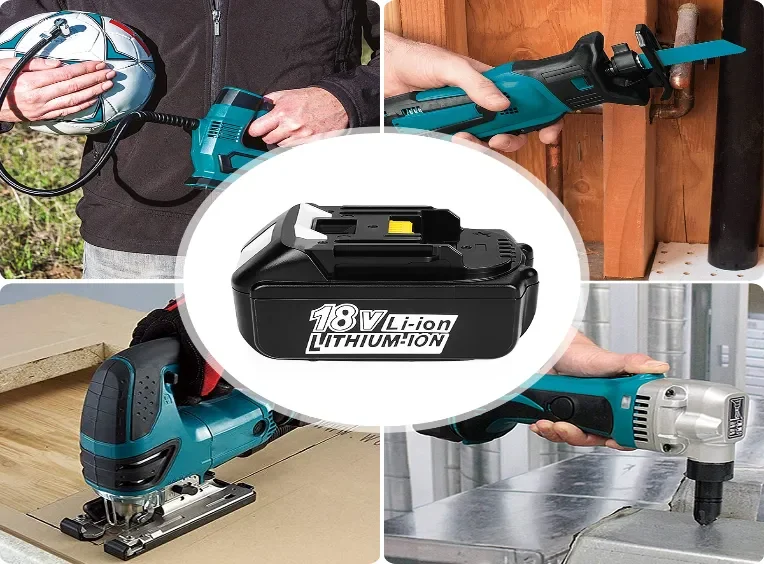Overview of Power Tool Battery Chemistries
This guide covers the main rechargeable battery types used in modern cordless tools—NiCd, NiMH, Li-ion, advanced Li variants, and emerging technologies—and explains the performance, cost, and durability trade-offs of each chemistry. Understanding these differences helps you choose the best drill battery or spare pack for your needs.

1. Nickel–Cadmium (NiCd)
- Voltage: 1.2 V per cell; typical drill battery packs: 9.6 V, 12 V, 18 V, 24 V
- Pros: Rugged, tolerant of extreme temperatures, high discharge rates make it a reliable drill battery in cold conditions
- Cons: “Memory effect” reduces capacity over time; low energy density; contains toxic cadmium
| Pros | Cons |
| Excellent cold-weather performance | Significant memory effect |
| High peak discharge capability | Low Wh/kg, environmental issues |
2. Nickel–Metal Hydride (NiMH)
- Voltage: 1.2 V per cell; common drill battery voltages: 9.6 V, 12 V, 18 V
- Pros: Higher energy density (~40 % more than NiCd), no memory effect
- Cons: High self-discharge (~20%/month), heavier than Li-ion packs
| Pros | Cons |
| No memory effect | Heavy and bulky |
| Moderate cost | Lower cycle life than Li-ion |
3. Lithium-Ion (Li-ion)
- Voltage: 3.6–3.7 V per cell; typical drill battery configuration: 5 × 3.7 V = 18 V nominal
- Pros: Highest energy density, low self-discharge (retains > 80 % after months), light-weight drill battery option
- Cons: Higher cost per Wh, requires a robust BMS for safety
| Pros | Cons |
| Excellent weight-to-energy | Premium price |
| Low self-discharge | Needs complex battery management |
4. Advanced Lithium Variants
LiFePO₄ (LFP)
- Voltage: 3.2 V per cell; extremely safe with > 1,000-cycle life, but ~20 % lower energy density than standard Li-ion.
NMC/NCA
- Voltage: 3.6–3.7 V per cell; higher power and energy density for “High-Output” drill batteries, with slightly reduced thermal stability.
5. Specialty & Emerging Technologies
Solid-State Batteries
- Promise higher safety and energy density; still in R&D, not yet common in drill battery packs.
Smart Li-ion Packs
- Include built-in fuel gauges and real-time state-of-charge readouts to optimize performance.
Choosing the Right Chemistry for Your Drill Battery
1. Match Performance Needs
- Heavy-duty, high-draw tools → Li-ion or NMC packs
- Extreme environments → NiCd or LFP
- Occasional use, budget constraints → NiMH
2. Consider Weight & Size
- Li-ion for lightweight, portable drill battery packs
- NiCd/NiMH for rugged, bulkier requirements
3. Self-Discharge & Storage
- Li-ion: low self-discharge, ideal for infrequent use
- NiMH: higher self-discharge; recharge every few weeks
- NiCd: moderate self-discharge; perform periodic full cycles
4. Environmental & Disposal
- Avoid toxic NiCd where possible; choose recyclable Li-ion or LFP chemistries
5. Safety & BMS Features
- Ensure drill battery replacement packs include over-charge, over-discharge, over-current, and thermal protection
Conclusion
NiCd and NiMH still serve niche roles in rugged or budget-sensitive drill battery applications, while Li-ion dominates most cordless tool markets for its balance of runtime, weight, and convenience. Advanced variants like LFP or NMC offer specialized benefits in safety or power. Always match pack voltage, cell quality, and BMS features—and follow best practices for charging and storage—to maximize safety, lifespan, and performance of your drill battery.